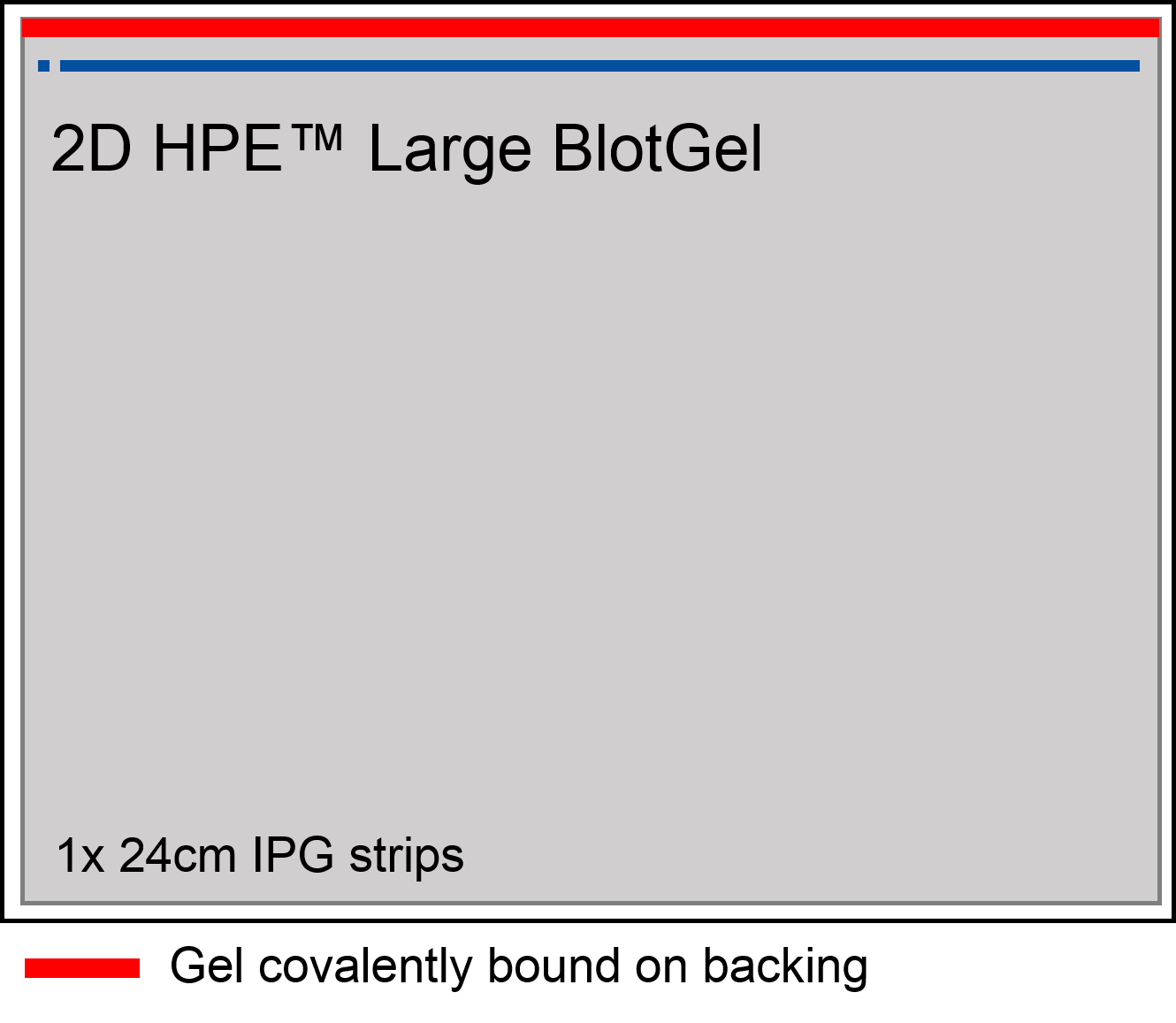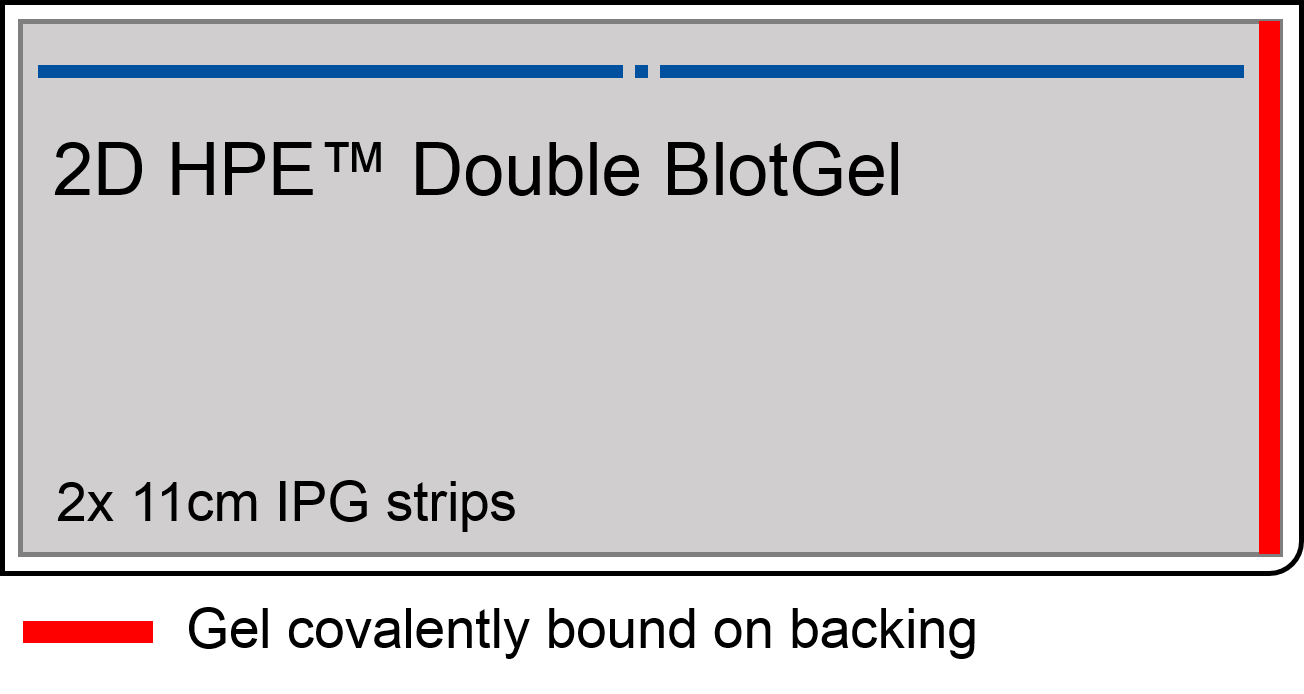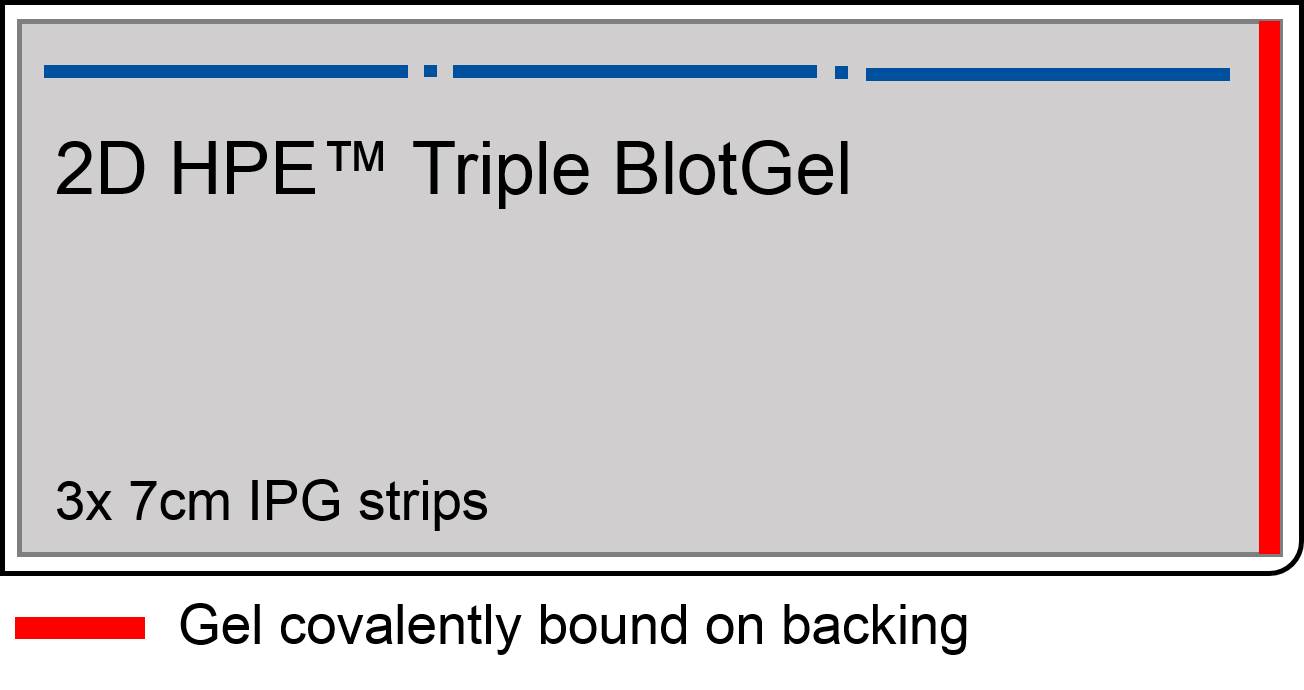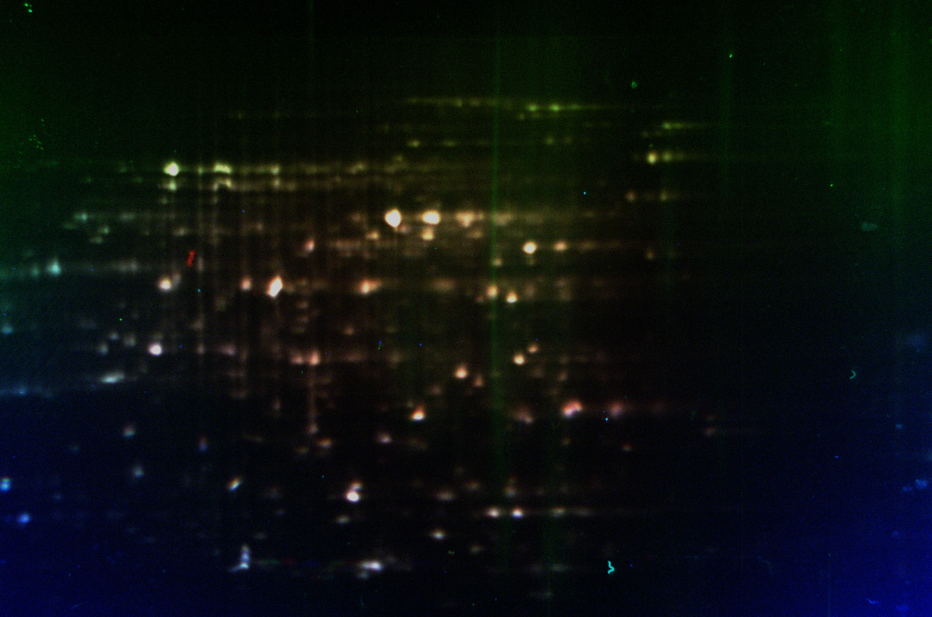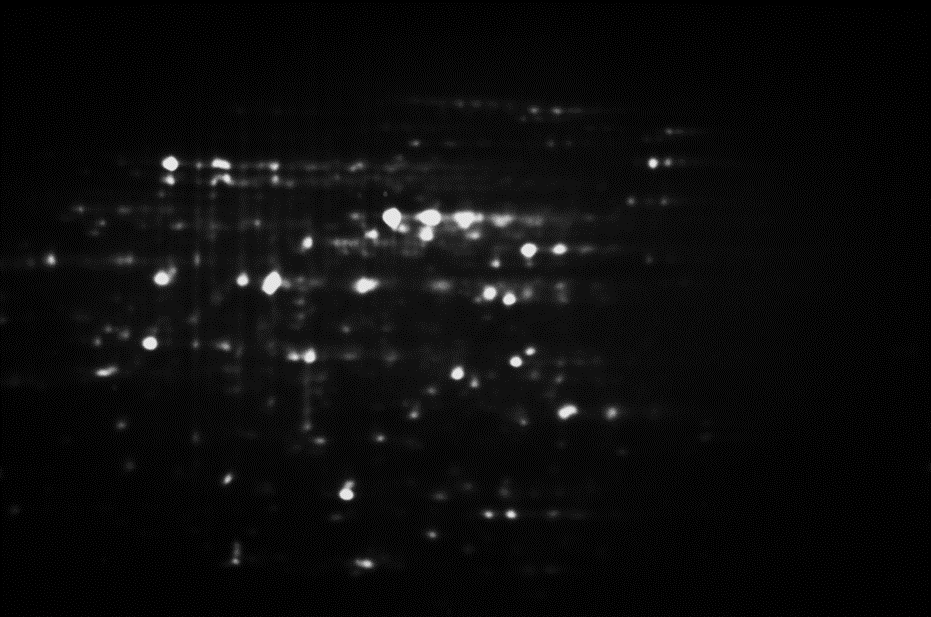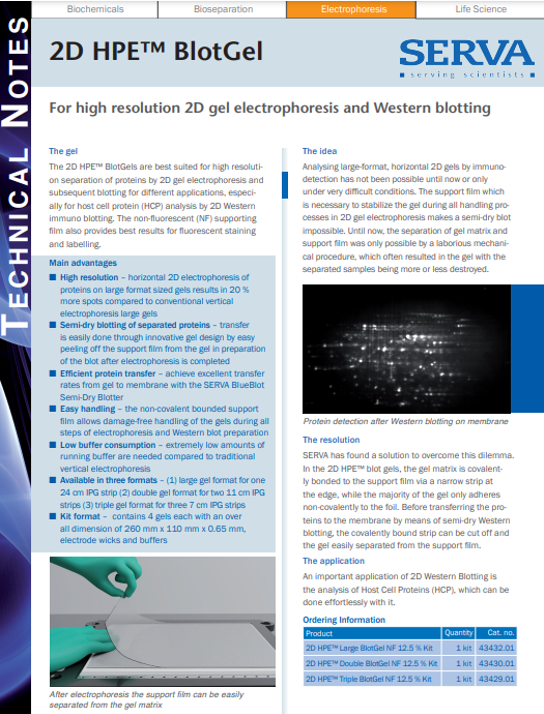Host Cell Proteins (HCPs)
Cell culture is usually used in the production of biopharmaceuticals. The host cells express not only the drug itself, but also many other proteins called host cell proteins (HCPs). These can impair the efficacy of the active ingredient and be potentially dangerous to humans. Therefore, the cut-off value of HCPs must be qualified and quantified after purification of the product.
To detect low levels, 2D electrophoresis followed by immuno-blotting is one option. SERVA’s horizontal electrophoresis system and blotable ready-to-use gels provide you with a high-resolution and high-performance complete package.
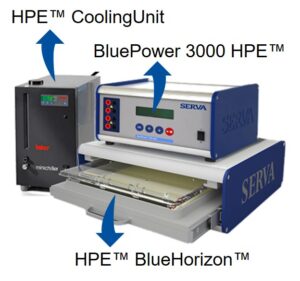
Sample preparation
Most commercially available purification kits for 2D electrophoresis are bind-wash-elute columns. These are expensive, cause a lot of plastic waste and always involve protein loss. In case of many / different impurities we therefore recommend protein precipitation according to Wessels & Fluegge. This removes all impurities and protects the sample. For precipitation we offer methanol and chloroform.
The first dimension of 2D electrophoresis (isoelectric focusing) is particularly sensitive to salt. If the sample does not require purification but has a high salt content (often caused by cell culture buffers and wash solutions), we recommend the X-Spinner ultrafiltration concentrators. The unique design of the Proteus X-Spinner ultrafiltration concentrators allows ultrafiltration in the opposite direction to the centrifugal force, minimizing protein loss.
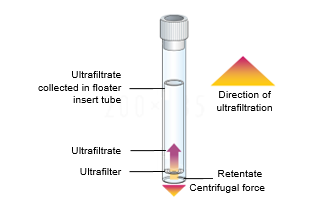
2D electrophoresis
1. Dimension
In isoelectric focusing, proteins are separated according to their isoelectric point. For this purpose, gel strips with immobilized pH gradients (IPG strips) are used. According to the separation requirements of your sample and depending on the choice of gel format (mini-midi-large), we offer five different lengths (7 cm – 24 cm) with six different pH gradients each. Click here for an overview.
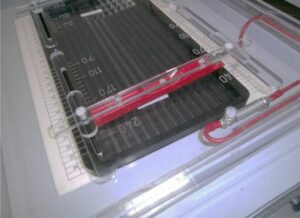 |
High voltage is needed to focus stripes. Other manufacturers offer high-priced IPG focusing devices. Our workflow should be simple for the customer and still achieve the best results.
Using the HPE™ electrode lid with IPG tray and the BluePower™ 6000 IPG power supply, you can upgrade your HPE™ BlueHorizon™ to a focusing unit. |
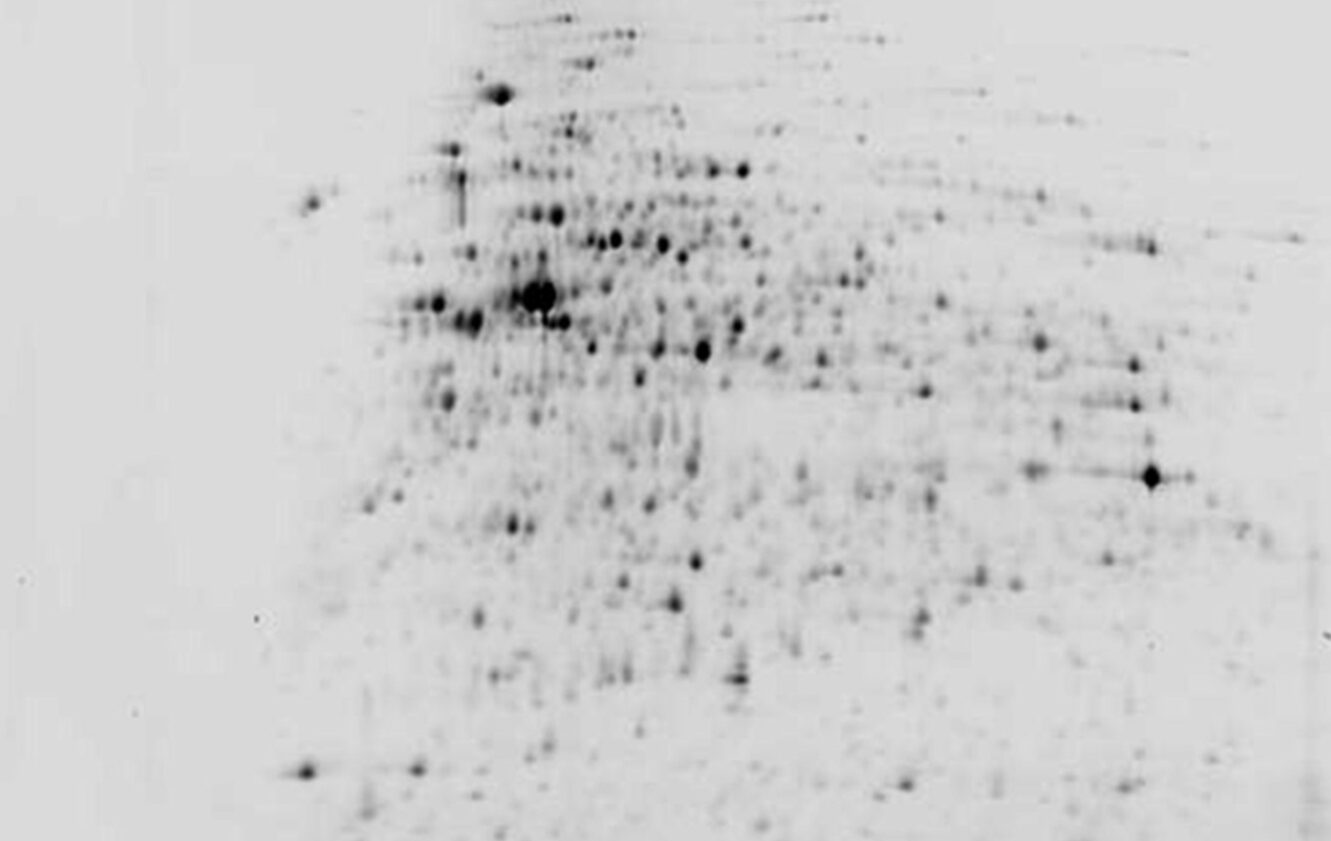
2. Dimension
In SDS PAGE, proteins are separated according to their molecular weight. Especially in 2D electrophoresis the spot sharpness is important for a good evaluation. Compared to vertical gels, which usually have a thickness of more than 0.75 mm, the spot resolution of cooled and ultra-thin horizontal gels is increased manyfold. To prevent the gels from tearing, they are applied on a carrier foil.
The best chamber for these gels is the HPE™ BlueHorizon™. A ceramic cooling plate, indestructible electrodes and stackability are just three of the many advantages.
Horizontal, film-backed gels have the disadvantage that they are not blotable. In the past, a 2 liter bottle and a fishing line were used to cut the gel off the film. We have developed blotable gels that adhere covalently to the film only at narrow, defined areas (Fig.: red stripes). Using a scalpel, this is cut off and the gel can then be peeled off. To avoid tearing the gel, it is recommended to build up the blot upside-down.
The 2D HPE™ BlotGels are available in three versions for short, medium and long IPG strips. The backing is non-fluorescent. It is therefore possible to detect the separated sample after electrophoresis and before blot setup with fluorescent dyes or labels.
Tip: Label with fluorescence before first dimension, then the electrophoresis quality can be checked before blotting. This is sustainable and saves money. We recommend the NHS esters from SERVA: SERVA Lightning SciDye Set
2D Western blotting
With the 2D HPE™ BlotGels, blotting horizontal gels is simple. A small cut with a scalpel and the gel can be peeled off the plastic backing.
The easiest way to do this is with the BlueBlot Semi-Dry blotter. The completely removable electrodes make the upside-down setup much easier than with a glass plate. After everything has been stacked bubble-free, the sandwich is flipped between the electrodes and placed in the blotter. A specially designed lid holds the blot in place and presses it lightly. Weighing down the lid is old-fashioned.
Since you’re blotting large gels, you also need a power supply with high Ampere output. The BluePower™ 300 BLOT provides enough current for a perfect blot result.
Antibody detection
To block non-specific binding sites for your antibodies we recommend the protein-free blocking reagent BlueBlock PF. Another advantage is that it can also be used to dilute your HCP primary antibody and anti-IgG-HRP secondary antibody.
For chemiluminescence detection, SERVA gives you the choice between classical solution A/B solution or ready-to-use pre-mixes. The respective SERVALight substrates differ in light intensity and duration.
Interested in our complete Western Blot portfolio? Click here.





